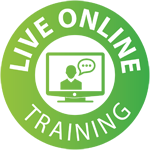Standard Level - Live Instructor-Led Training
3 days (In-Person) 8 hours per day or
4 sessions (Live Online) 6 hours per session
I am interested in a combination of training (contact Doulos to discuss your options) »
Course Description
This course brings experienced FPGA designers up to speed on developing embedded systems for the Zynq™ All Programmable SoC. The basic features and capabilities of Zynq are also included in the lectures and labs. These hands-on labs are plentiful and provide personal experience with the development, debugging and simulation of an embedded system.
Additionally, the features and capabilities of the AMD MicroBlaze™ soft processor are also included in the lectures.
This course uses materials developed by AMD and conveniently combines the courses:
Software and hardware design engineers who are interested in developing embedded systems with the Zynq SoC.
- FPGA design experience
- Completion of Vivado FPGA Design Essentials training or equivalent knowledge of Vivado™ software tools
- Basic understanding of C or C++ programming (including general debugging techniques)
- Some HDL modelling experience
- Conceptual understanding of embedded processing systems including device drivers, interrupt routines writing / modifying scripts, user applications and boot loader operation
- Vivado™ Design or System Edition (latest version)
- Architecture: Zynq™ SoC and 7 series FPGAs*
- Demo board: Zed
* This course focuses on the Zynq SoC and 7 Series FPGA architectures. Please contact Doulos for the specifics of the in-class lab board, other customizations or architecture.
You can also attend this course if you intend to use the AMD MicroBlaze soft processor in a 6 Series FPGA such as Spartan-6 or Virtex-6. Please contact Doulos for the specifics of your requirements before booking.
After completing this training, you will be able to:
- Describe the various tools that encompass an AMD embedded design
- Rapidly architect an embedded system containing a Cortex®-A9 processor by using the Vivado IP Integrator and PS Configuration Wizard
- Create and integrate a processing system component
- Design and add a custom peripheral
- Bus Functional Model Simulation
- Implement an effective software design environment for an AMD embedded system using the AMD SDK tools
- Write a basic user application using the AMD Software Development Kit (SDK) and run it on the embedded system
- Use AMD debugger tools to troubleshoot user applications
- EDK Overview
- IP Integrator and the Processing System Configuration Wizard
- Lab 1: Hardware Construction with the Vivado IP Integrator Tool
- Software Development Using SDK
- Lab 2: Adding and Downloading Software
- Introduction to AXI
- Interrupts
- Adding Hardware to an Embedded Design
- Lab 3: Adding IP to a Hardware Design
- MicroBlaze Processor Basics (optional)
- Cortex-A9 Processor Basics
- Designing a Custom Peripheral
- Adding Custom IP to the Embedded System
- Bus Functional Model Simulation
- Lab 4: Sharing PS Resources with the MicroBlaze Processor – Hardware
- Software Platform Development
- Lab 5: Basic System Implementation
- Software Development Using SDK
- Writing Code in the Standalone AMD Environment
- Lab 6: Application Development
- Address Management
- Application Debugging
- Lab 7: Debugging
- Lab 1: Hardware Construction using the Vivado IP Integrator Tool (Zynq SoC) – Create a project using the IP Integrator to develop a basic hardware system and generate a series of netlists for the embedded design.
- Lab 2: Adding and Downloading Software – Complete the processes begun in Lab 1 using the SDK tools to create a software BSP and sample application. Configure the device and download the application.
- Lab 3: Adding IP to a Hardware Design – Add IP to an existing processing system. Configure the device and download the application.
- Lab 4: Sharing PS Resources with the MicroBlaze Processor – Hardware –Sharing PS Resources with the MicroBlaze Processor (Hardware) – Add peripherals to a Zynq SoC design and connect the PS to a PL processor (i.e., a MicroBlaze processor to share PS resources). Generate the netlists and bitstream of the complete design.
- Lab 5: Basic System Implementation – Construct the hardware and software platforms used for the course labs. Begin with Processing System Configuration Wizard (Zynq SoC) to create the hardware design. Specify a basic software platform and add a software application to the system.
- Lab 6: Application Development – Create a simple software application project with the provided source files for a software loop-based stopwatch. Verify proper BSP settings and linker script generation. Use API documentation for the GPIO peripheral to complete the software application. Verify proper operation of the stopwatch in hardware.
- Lab 7: Debugging – Launch the SDK debug perspective and the previous lab’s stopwatch application for debugging, setting breakpoints, calculating interrupt latency, and stepping through the program’s operation.




